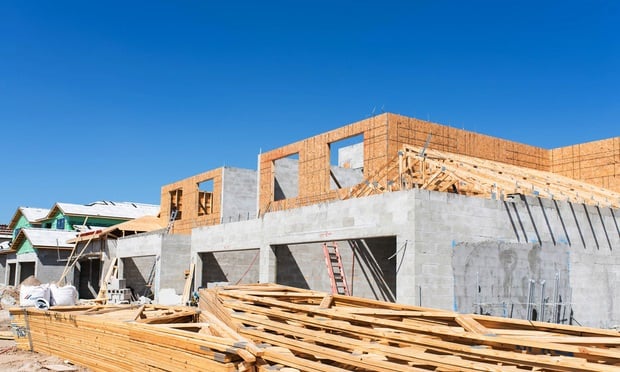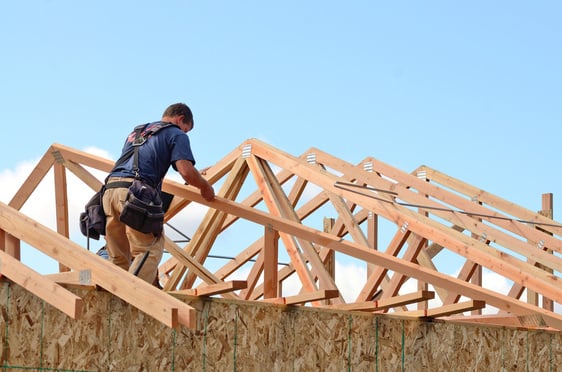Part 1 of 3
Fifteen years ago, the office was very different than what you see today in terms of development and design trends. There were more areas for administrators, filing cabinets, and overall, there were more intensive office build-outs and fewer collaborative areas. That is according to Jonathan Larsen, principal and managing director of Avison Young, one of the many sources we chatted with for GlobeSt.com's 15-year anniversary celebration.
According to Jim Roherty, president of Pacific Building Group in San Diego,these individual rooms and a couple of conference rooms were closed off and felt permanent, “making it more challenging for individuals to collaborate and move around the office.”
Today, Roherty says, open, informal spaces are designed to improve communication and collaboration. His company recently completed a project for Moss Adams LLP in UTC, for example, which includes 120-degree workstations in four team-building “communities” that promote collaborative and creative functions.
And Glendale, CA-based Bill Boyd, a senior managing director at Charles Dunn Co., notes that we are in a creative work environment that is a reaction to the Millennial workforce that has grown up with less absolutes than previous generations.
According to Julie Kilpatrick, senior manager for project and development services of office at JLL, all companies are looking to conserve their footprint and utilize technology to drive greater collaboration, which equates to increased productivity. “This may include investing in a smaller number of private offices and formal conference spaces to a greater emphasis on designing a space to maximize 'casual meeting points' that encourage interaction throughout the day.”
Kilpatrick adds that “social hubs are replacing formal cafeteria/break spaces, while lower-height workstations and mobile technology are the backbone for creating 'neighborhoods' in open floor plans.”
Updated designs, she continues, include “dedicated meeting spaces, casual collaboration and lounge areas, along with 'quiet zones' where people can focus on intense activities and deliverables for a large part of their day.”
But what is also central to office design, according to Roherty, is employee comfort, which he says “is achieved through improved HVAC controls and technology, access to natural light and fresh air, and the addition of outdoor spaces such as an amphitheater, bocce ball court or barbecue area, which we're building for current clients.” Also, he adds, “the use of modular furniture, doors and walls improve the flexibility of an office. Modular equipment can be moved around, modified or repurposed, enabling organizations to accommodate future needs without demolition.”
These modifications and the re-purposing of existing space often occur within occupied facilities, creating the challenge of maintaining optimal operations while minimizing disruptions to employees.” For example, Pacific Building Group's recent project for NuVasive was completed over four phases using “shift scheduling” to take advantage of daytime and evening schedules while renovating over 90,000 square feet in their current San Diego headquarters.
Demand for flexibility and a younger generation of workers are driving these social norms along with the financial aspects of doing more with less, Kilpatrick explains.
“In the past five years, we've seen increased growth from tech companies,” architects, advertising firms and many other companies involved in creative work, Julia Georgules, vice president, JLL Research, recently told GlobeSt.com. “In general, they want architecturally-significant space,” and believe that a building's character can have an impact on company culture.
This desire leads the creative types to look for spaces on the peripheries of their downtowns, because the historic buildings with the proper character “are not right in the central business districts; they are in areas with a mix of property types.” She points to Chicago's Fulton St. Corridor and Manhattan's Midtown South as perfect examples.
The lower rents found in the peripheries, she adds, also gives tenants “really great opportunities to spend more on the interiors” and create unique identities.
In fact, non-traditional urban space has become even more appealing to modern companies. In the past three quarters, class B office leasing has surged among scientific and technical companies, JLL found. Of total office leases over 20,000 square feet, 25% of the office space rented by these companies was in class B, versus 6% in trophy buildings.
Among the notable transactions fitting this trend are Buzzfeed's 200,000 square-foot lease at 225 Park Avenue South in New York's Midtown South submarket and Pinterest's nearly 98,000 square foot lease at 651 Brannan Street in San Francisco's South of Market District.
Creative companies also “like the idea of adaptive reuse and contributing to neighborhood revitalization,” Georgules adds. “As the gap between trophy and non-trophy space continues to grow over the short-term, we actually could be reaching a peak inflection point based on future demand patterns favoring space over building.”
Check back with GlobeSt.com in the next day or so for part two of a look at development and design trends in office, where we talk about how commercial office projects appear to be the caboose of the recession recovery train, among other things.
Continue Reading for Free
Register and gain access to:
- Breaking commercial real estate news and analysis, on-site and via our newsletters and custom alerts
- Educational webcasts, white papers, and ebooks from industry thought leaders
- Critical coverage of the property casualty insurance and financial advisory markets on our other ALM sites, PropertyCasualty360 and ThinkAdvisor
Already have an account? Sign In Now
© 2024 ALM Global, LLC, All Rights Reserved. Request academic re-use from www.copyright.com. All other uses, submit a request to [email protected]. For more information visit Asset & Logo Licensing.








